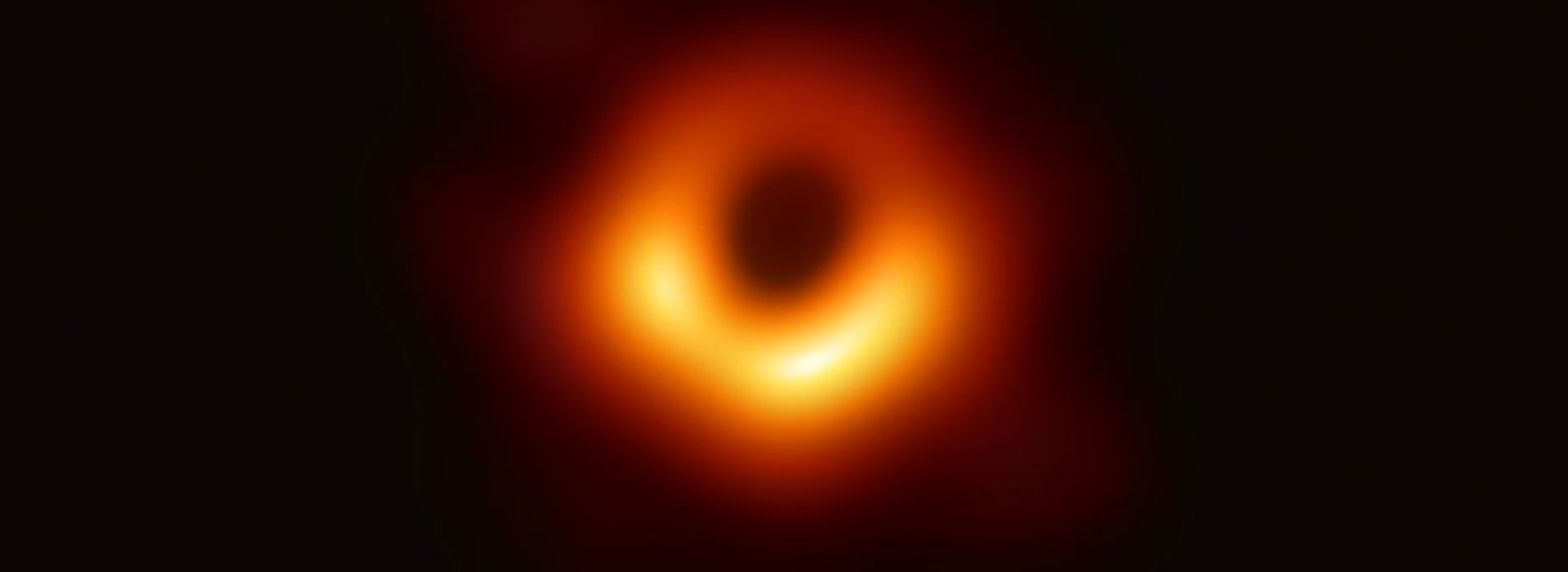By: Cynthia Macdonald
10 Apr, 2019

Fellows in CIFAR’s Gravity & the Extreme Universe program were part of the international collaboration that snapped the historic shots
For the first time, an international team of astronomers have produced a picture of the ultimate invisible object: a black hole.
The Event Horizon Telescope (EHT) collaboration, involving eight ground-based telescopes located around the world, described its findings in six international press conferences held on April 10. The results were also detailed that day in a series of papers in Astrophysical Journal Letters.
The photo captured by the EHT reveals a supermassive black hole at the centre of a glowing orange ring. This ring of light surrounds the event horizon, a barrier beyond which the pull of gravity is so forceful that nothing, including light, can ever escape it.
Daryl Haggard, a 2017 CIFAR Global Scholar and assistant professor of physics at McGill, is one of more than 200 astronomers who contributed to today’s publications. She says the implications of the EHT photo for scientists in CIFAR’s Gravity & the Extreme Universe program are considerable.
“This will help us understand how mass gets into black holes,” she says. “It offers a chance to dive in and understand the physics of materials next to a black hole – to really understand the entire ecosystem.”
The black hole in today’s photograph is located in the galaxy M87, some 55 million light years away. Haggard has done extensive research on another black hole captured by the telescope, known as Sagittarius A* (pronounced A-star.)
The data on this last has not yet been released, but will be soon, says Haggard. The analysis is more complicated to perform, since Sagittarius A* is a highly variable black hole, and is buried within the crowded centre of our own Milky Way.
Today’s event also confirms the power of the technology used to capture the imagery, known as very long baseline interferometry. Matt Dobbs is a CIFAR fellow in the Gravity & the Extreme Universe program, and an associate professor at McGill University. He is engaged in the design and operation of instruments such as those used to capture the EHT images. While not involved in data analysis for this project, he has worked extensively at the South Pole, where one of the EHT telescopes is located (the others are in Chile, Mexico, Spain, the mainland U.S. and Hawaii).
“This image marks the beginning of a new era,” he said in an email. “We have long seen the effects of black holes powering galactic emission and helping shape the large scale structure in the cosmos. Finally, we’re seeing these objects directly, and the technology of very long baseline interferometry has reached a new-found level of maturity.”
Ue-Li Pen, also a fellow in CIFAR’s Gravity & the Extreme Universe program, was was also a collaborator on the work through his role as director of the Canadian Institute for Theoretical Astrophysics.